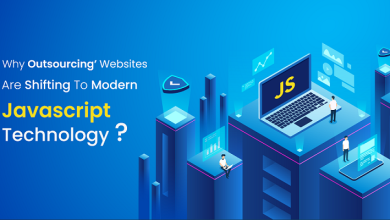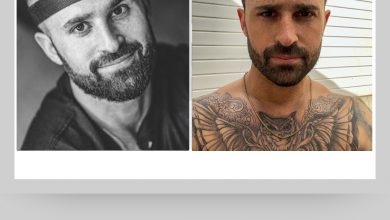How to create the perfect landing page that converts (10 easy steps)

Designing a good landing page isn’t rocket science—but it does take some work. You need to learn how to give customers what they want by going beyond simply designing something that “looks good.”
So, where should you start? Keep reading, and I’ll lay it out for you.
What is a landing page?
A landing page is any web page a customer sees when clicking on an ad. A landing page needs to have two things: an offer and high-quality content. An offer can be something like “Sale Now On” or “Get $50 Off.” It could also be a free trial, such as NetFlix’s 30-day free trial. Basically, anything that’s special for the visitor is considered an “offer”.
High-quality content means there should be no errors and the design of the page needs to be attractive. Ideally, it should stand out so much that visitors will actually share your landing page with their friends. The reason being is that they feel proud about the product or service you’re offering.
They helped spread something cool, and they want others to know too! In addition, a good landing page is mobile-friendly, since more and more people access websites on their phones.
Lastly–but most importantly–a landing page needs big juicy buttons. These are what attract visitors’ attention.
The 10 steps to creating the perfect landing page (conversion-optimized)
Headline
Professional copywriters know that a great headline will get you to read the rest of an ad, but I urge you not to put all your eggs in one basket. Include both a title and a subtitle on your landing page. This lets people who are skimming see what the offer is at a glance, while those looking for something more specific can delve deeper into the page.
Example: “Learn The Secret to Publishing Profitable Blog Posts in 30 Minutes or Less”
P.S – Make sure the title and subtitle (and your offer) are specific enough to let a user know exactly what they’re going to get from reading the article.
Subheadline
One of the key elements to creating an effective landing page is a subheadline.
A compelling headline that captivates readers should be followed by a persuasive subheadline that makes visitors stay on your website and convert. Together, these two components form a one-two punch of copy power that can compel visitors to take action.
It is a landing page that does not offer much to be inspired by. The headline, “Where Work Happens” is sufficiently concise and attention-grabbing but the subheadline gets straight into specifics (tasks).
If readers want their team members to undertake any of those tasks, they are more likely to click the Get Started button.
Images
Images make a landing page more appealing to visitors. Click on the image below to see how this company makes its web presence visually entertaining and interesting (relates).
There are several ways you can add images to your website including adding them inline or by uploading a folder of images with captions, but here we will discuss using eye-catching images that increase conversion rate.
The most popular method is by adding an image in line with the text. This means that there is an image at every point where you would normally break up your text with a subheadline or paragraph. Images help keep users engaged, so don’t be afraid to have lots of content on your site that contains visuals.
Use Video
In addition to images, use an animated video as the first thing that a user sees on your landing page. This video should be short and relate in some way to the service you offer or the product you are promoting.
Other techniques that can help create a successful sales page include using punch lines and call-to-action buttons. It is important, however, not to overwhelm users with too much information; make sure they understand what they’re reading before moving onto other areas of the sales page.
Loading Speed
If your landing page takes too long to load, you will lose visitors and potential customers. The majority of internet users have very short attention spans, so if they are presented with a loading screen that doesn’t have an “x” button displayed at the bottom, they won’t wait for the text to go away before leaving.
The only way around this is to find ways to decrease the amount of time it takes for your website to load. If your server can hold more information per page in its cache (see below) then less work needs to be done each time someone visits a page on your site. This means that there is less waiting involved from both your site and the user’s side.
Mobile Responsive
The majority of internet users are now using their mobile phones and tablets to get online. If your landing page isn’t responsive, you will be losing potential customers as they can’t wait for the full content to load. Mobile responsive also helps in SEO strategy.
Creating a landing page that is mobile responsive. It provides some great tips for making an impact with your visitors regardless of what device they are using to connect to the web.
It takes roughly 2 seconds or less for most people before they decide to leave the page.
Make It Scannable
Even on a mobile device, people don’t want to spend much time reading about you and what you have to offer. They quickly scan over the page and within 2-4 seconds of viewing your landing page they will decide if it is worth their time or not.
No one wants to feel like they are being sold, but there is nothing wrong with letting the user know that this is an exclusive opportunity. If someone believes in your product/service enough to visit your site for further information then let them know that they aren’t going to find it anywhere else!
Trust Signals
Adding an image of you alone is a trust signal; be sure to have your web camera and microphone turned on.
By uploading a recent headshot that represents you as the owner of the business, helps build authority and trust with your audience.
A word of warning; if you are using images to make yourself appear larger than life or add any other effect, be aware that it may not always be perceived in the same way as intended by your visitors.
When someone sees their favorite celebrity on TV they automatically assume that they are larger than life, but when this is translated into print media then it can come across as unnatural and literally out of proportion which may have a negative impact on your brand.
Call To Action
The main purpose of a landing page is to capture opt-ins and leads for your business. A call to action (CTA) button can assist with this goal, but it also draws attention to the most important part of the page
A simple CTA that says something like, “Try it free!” or “Get started today” draws attention and encourages users to take action. To maximize your conversion rate, you will want multiple CTAs on your landing pages with different variations of wording such as “Start my free trial now,” or “Download our app for iOS now.”
If you have more than one offer available on your site then try using CTAs that target individual offers.
Perform A/B Test
With a well-optimized landing page and an effective CTA, you can look at the possibilities. A/B testing is now a simple and easy way to research which of your CTAs will produce the biggest payoff.
This means that you’re using one section of your landing page with one variation of a CTA for traffic, while another variation is used on a different piece of your site for traffic.
Conclusion
Landing pages that lack copy, are badly optimized, and present the wrong offer to visitors will never be effective at converting.
The goal of a landing page is to convert the visitor into an email subscriber or social media fan with just one click. If you can’t get them to do that in under 8 seconds then you have failed as a marketer. So, if you want to avoid a business-killing disaster, take action now! Your business depends on it.
Do you need help with designing your landing page with perfect copy and content? Connect with us: Pixel Street – Web Design Agency today!






